Individual similarities and differences in eye-movement-related eardrum oscillations (EMREOs)
- PMID: 37979436
- PMCID: PMC11081086
- DOI: 10.1016/j.heares.2023.108899
Individual similarities and differences in eye-movement-related eardrum oscillations (EMREOs)
Abstract
We recently discovered a unique type of otoacoustic emission (OAE) time-locked to the onset (and offset) of saccadic eye movements and occurring in the absence of external sound (Gruters et al., 2018). How and why these eye-movement-related eardrum oscillations (EMREOs) are generated is unknown, with a role in visual-auditory integration being the likeliest candidate. Clues to both the drivers of EMREOs and their purpose can be gleaned by examining responses in normal hearing human subjects. Do EMREOs occur in all individuals with normal hearing? If so, what components of the response occur most consistently? Understanding which attributes of EMREOs are similar across participants and which show more variability will provide the groundwork for future comparisons with individuals with hearing abnormalities affecting the ear's various motor components. Here we report that in subjects with normal hearing thresholds and normal middle ear function, all ears show (a) measurable EMREOs (mean: 58.7 dB SPL; range 45-67 dB SPL for large contralateral saccades), (b) a phase reversal for contra- versus ipsilaterally-directed saccades, (c) a large peak in the signal occurring soon after saccade onset, (d) an additional large peak time-locked to saccade offset and (e) evidence that saccade duration is encoded in the signal. We interpret the attributes of EMREOs that are most consistent across subjects as the ones that are most likely to play an essential role in their function. The individual differences likely reflect normal variation in individuals' auditory system anatomy and physiology, much like traditional measures of auditory function such as auditory-evoked OAEs, tympanometry and auditory-evoked potentials. Future work will compare subjects with different types of auditory dysfunction to population data from normal hearing subjects. Overall, these findings provide important context for the widespread observations of visual- and eye-movement related signals found in cortical and subcortical auditory areas of the brain.
Copyright © 2023. Published by Elsevier B.V.
Figures


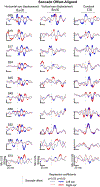

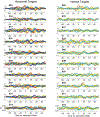

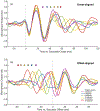
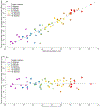

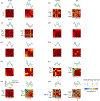
Update of
-
Individual similarities and differences in eye-movement-related eardrum oscillations (EMREOs).bioRxiv [Preprint]. 2023 Aug 6:2023.03.09.531896. doi: 10.1101/2023.03.09.531896. bioRxiv. 2023. Update in: Hear Res. 2023 Dec;440:108899. doi: 10.1016/j.heares.2023.108899. PMID: 36945521 Free PMC article. Updated. Preprint.
References
-
- Abbasi H, King CD, Lovich S, Röder B, Groh JM, Bruns P (2023) Audiovisual temporal recalibration modulates eye movement-related eardrum oscillations. International Multisensory Research Forum.
-
- Bahill AT, Clark MR, Stark L (1975) The main sequence, a tool for studying human eye movements. Mathematical Biosciences 24:191–204.
-
- Baloh RW, Sills AW, Kumley WE, Honrubia V (1975) Quantitative measurement of saccade amplitude, duration, and velocity. 25:1065–1065. - PubMed
-
- Blauert J (1997) Spatial hearing. Cambridge, MA: MIT Press.
Publication types
MeSH terms
Grants and funding
LinkOut - more resources
Full Text Sources
Miscellaneous

